Mexico has some amazing historical ruins, with thousands of years of history in the rearview mirror. Several indigenous tribes have lived in the nation over the years, but few are as well-known as the Maya.
Mesoamerican civilisation known as the Maya had a vast empire that spanned from what is now southern Mexico through Guatemala, Belize, Honduras, and El Salvador. They governed the area for hundreds of years while creating hundreds of magnificent cities along a complex web of roadways. They were accomplished farmers, astronomers, artists, and mathematicians.
Their culture is still thriving today in a number of isolated villages in Mexico. In fact, this region of the country still speaks the Mayan language.
By the year 900, the most of their towns had been abandoned, but what they had left behind were extraordinary hints about their past. There is a good chance that many tourists have heard of their famous cities, such Chichen Itza and Tulum. But, believe it or not, there are countless numbers of Mayan ruins dispersed throughout Mexico's southern states, from Campeche, Chiapas, and even Tabasco, to Quintana Roo and the state of Yucatan.
To truly comprehend Mayan culture, one must walk the ancient streets in their footsteps. With our list of the top Mayan ruins in Mexico, learn where to go for this.
1. Chichén Itzá
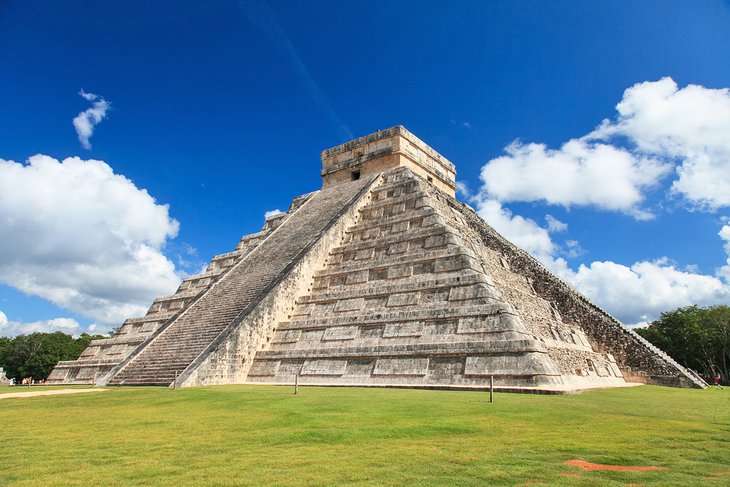
Chichen Itza must be mentioned whenever the Mayan ruins of Mexico are brought up. Chichen Itza, one of the New Seven Wonders of the World, is well-known around the world and is one of Mexico's most recognizable landmarks.
Chichen Itza, which is situated in the state of Yucatan and is a part of Mexico's Yucatan Peninsula, was a thriving Mayan city that existed during the fifth century. With a total area of around two square miles, it was one of the biggest Mayan cities. It had dwellings, historical buildings, places of worship, and even its own suburbs. It was a hive of trade.
El Castillo, a step pyramid with a mathematical and scientific design that is the best example of the Mayan mastery of astronomy, is one of the attractions of Chichen Itza. There are 365 steps (one for each day of the year), and twice a year, during the spring and fall equinoxes, a shadow that resembles a serpent appears on the pyramid as a tribute to Kukulcan, the most significant feathered serpent god of the Mayans.
2. Tulum
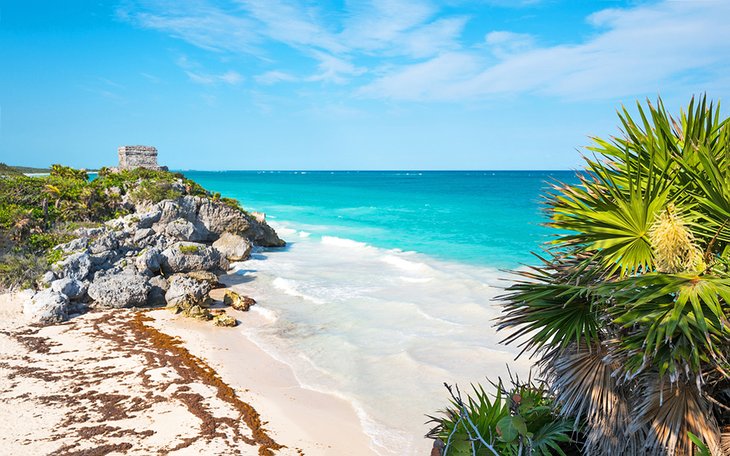
The beach ruins of Tulum are almost as well-known as Chichen Itza. The sight of its tallest edifice, El Castillo, located on a cliff overlooking the alluring turquoise Caribbean Sea, is emblematic of the place.
With more than two million tourists a year, it is one of Mexico's most popular tourist destinations. The place was originally called Zama, which is Arabic for sunrise. It makes sense given that the sunrises here are magnificent and well worth the early wake-up call.
When it was at its busiest, in the 13th century, the city served as a crossing point for travelers from the Yucatan Peninsula to Honduras and other parts of the Gulf of Mexico.
When visiting this spot, don't forget to bring your bathing suit. After exploring the historic city, many people choose to take a plunge in the sugar-colored sand that lies beneath the ruins.
3. Coba
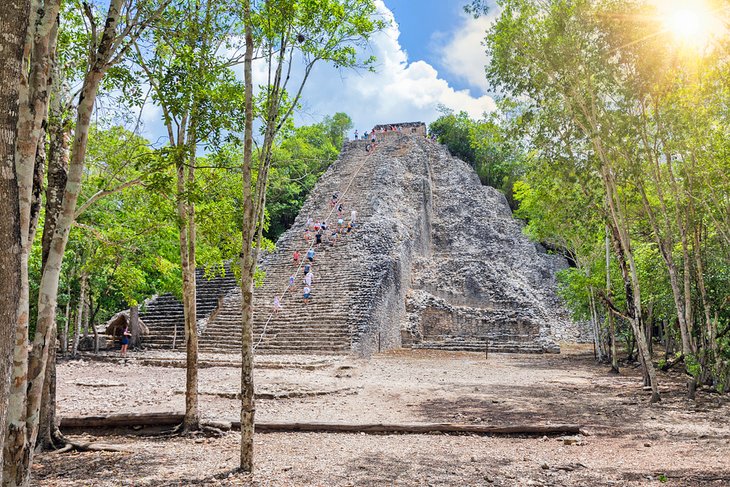
When it comes to popularity, Coba has lagged behind the nearby cities of Chichen Itza and Tulum. That's because the surrounding jungle was too dense to pass through until it was made accessible to the general public in the 1970s.
Although though today's excavations have only covered a small portion of the site, it is one of the largest Mayan towns, covering over 30 square miles. For exploring the four square miles that are accessible to the general public, bicycles can be rented.
One of the last archaeological sites in Mexico that visitors may still climb is Coba, which is cool. The major building, Nohoch Mul, is the pyramid to climb; it is reached by ascending a flight of narrow, slick stone steps. Yet the view, which stretches for kilometers and encompasses lush, green jungle, makes it worthwhile.
Palenque 4.

One of the most spectacular Mayan cities in Mexico is located deep among the mist-covered forests of the state of Chiapas. Although Palenque's history extends back to around the third century, the first recorded mention of it is from the sixteenth century.
Although it is not the largest Mayan city, it is considered to be one of the most significant because of the vast number of inscriptions that have been found there. These records of Mayan history and culture have allowed researchers to fully grasp them.
The area is covered in hundreds of ruins that were originally vibrantly colored with reds, blues, and yellows but are now a rocky gray. The Temple of the Inscriptions, which has numerous hieroglyphics, is the most spectacular building. In 1987, the entire location was inscribed on the UNESCO World Heritage List.
Calakmul 5.
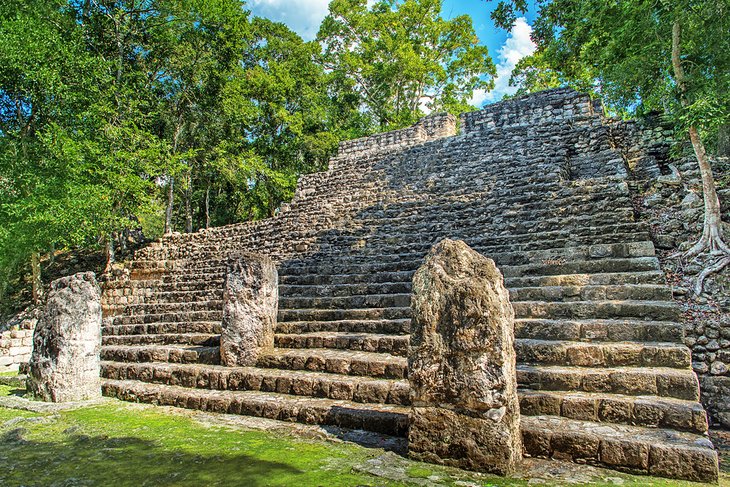
The Mayan world included the city of Calakmul for more than 1,200 years. The site is now situated on more than 7,000 acres of World Heritage property inside the Calakmul Biosphere Reserve, in the Mexican state of Campeche.
The property is completely covered in dense tropical forest, which is the second-largest tropical forest in the Americas after the Amazon. In truth, Calakmul was undiscovered and unaltered for millennia since the bush is so dense there. Only in 1993 was it designated as a World Heritage site.
By the time of the sixth century, the city's population peaked at about 65,000. Tikal, located in Guatemala directly across the border, was its strongest competition. The Great Pyramid, whose base covers five acres and whose apex soars 174 feet, is the most significant building at the location. You may still climb it; it is the tallest pyramid in the Yucatan.
Interesting fact: Climbers may view El Mirador, a nearby site in Guatemala, on clear days.
Bonampak 6.
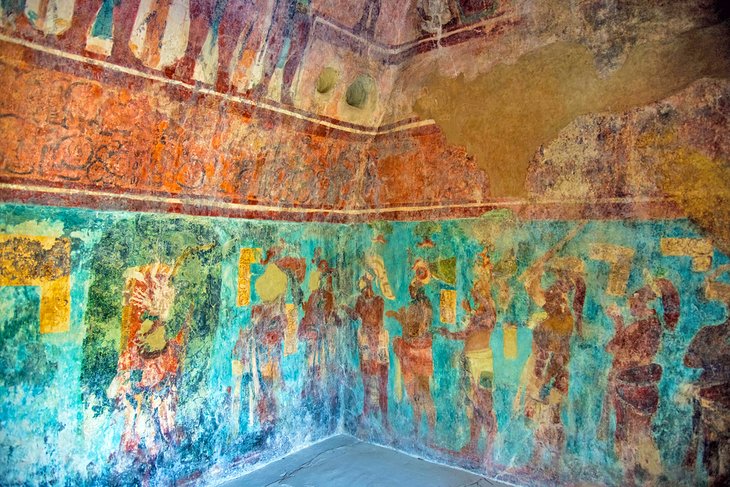
This Chiapas Mayan site's name, "Bonampak," which means "painted walls," couldn't be more appropriate. The archaeological site's main building is practically covered with brilliant, colorful murals. These murals are actually the best preserved in the entire Mayan world.
The Usumacinta River was used by the city, which was founded around AD 580, to trade with other illustrious Mayan cities like Yaxchilan and Piedras Negras.
Due to the distance required to reach it, Bonampak is still a little off the beaten path for tourists. The location is accessible from Palenque through a winding, jungle-filled road in around 2.5 hours. Nonetheless, guests are rewarded with a comparatively personal encounter surrounded by breathtaking sights. The murals depict Mayan traditions, including festivities, sacrifice, music, and warfare.
Although the paintings themselves are tightly guarded and more over 1,000 years old, guests can still view them from a ramp inside the doorway.
Ek' Balam 7.
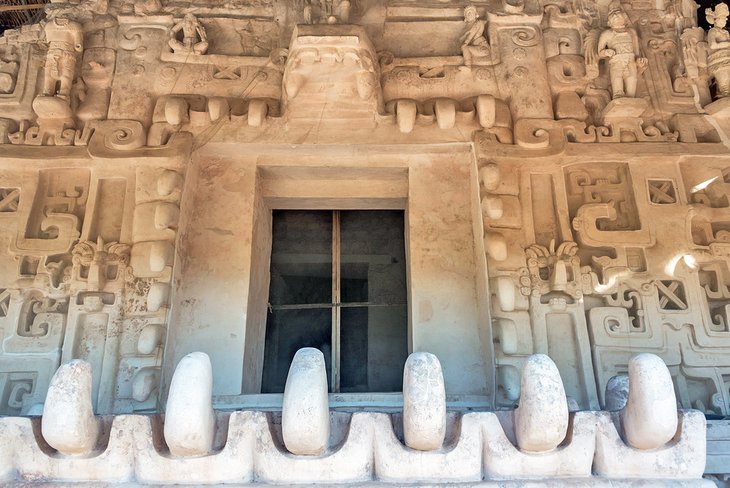
A mysterious prohibition was placed on the city of Ek' Balam soon after it reached its zenith in the eighth century. The stunning location, which is still largely obscured by jungle, has pyramids, a ball court, and, most prominently, an Acropolis.
The main pyramid of Ek' Balam, which stands at the top of the Acropolis, is decorated with a large jaguar mouth (Ek Balam meaning "the black jaguar"), plaster skulls, winged shaman figures, and other items. One of the largest Mayan buildings in the Yucatan is a structure known as El Torre that is more than 500 feet long, 200 feet wide, and 100 feet tall.
The grave of the king Ukil-Kan-Lek-Tok, who ruled the city during its peak in AD 800, is located in the Tower.
Only the city's center has been excavated today despite the fact that it was inhabited for more than a thousand years. Over 4.6 square miles were occupied by the entire settlement.
8. Uxmal
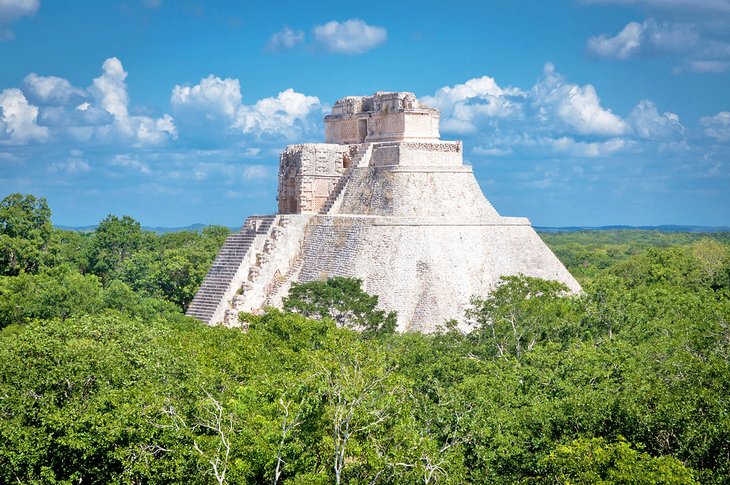
This historic Mayan city, which once housed 20,000 people, is located just outside of Merida in the state of Yucatan. The translation of the city's name, "Thrice Constructed," alludes to the fact that its largest building, The Pyramid of the Magician, was erected on top of earlier pyramids.
The settlement serves as a significant stop on the Ruta Puuc, a driving route that links nearby Mayan cities. Kabah, Labna, and Sayil are three connected cities. Puuc is both a geographic location and a type of architecture.
At its height, Uxmal was somewhere in the 10th century. It was left in ruins in the fifteenth century.
Currently, Uxmal is a 150-acre UNESCO World Heritage Site that has a number of structures that guests can climb.
9. Becán
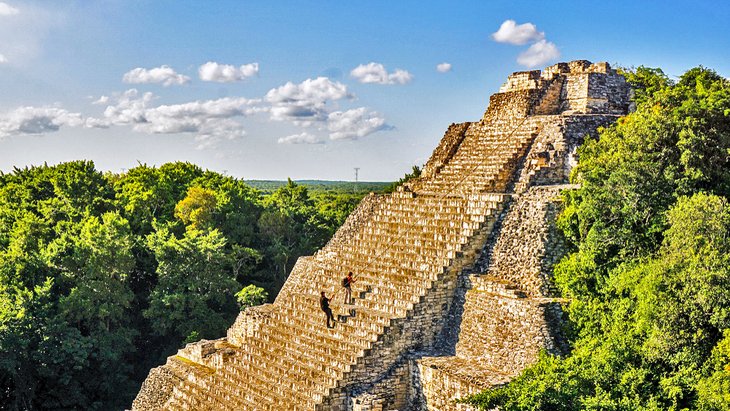
Just wait until you see Becan if Chichen Itza wasn't magnificent enough for you. Becan, one of several Mayan ruins close to Calakmul in the state of Campeche, is one of the most spectacular and sadly least frequented.
There are 20 structures on the seven-acre site that are accessible to the public. Although they were purportedly constructed more for show than for practicality, the enormous pyramids are what make this place unique. As an example, consider the numerous false staircases and entrances.
The world's greatest ancient wonders – rebuilt https://t.co/KWFbuclDHI
— A Travel Companion (@aTravelCompanio) March 20, 2018
Nohoch Mul Pyramid, #Coba
Due to its remote location in the dense jungle of #Mexico’s #Yucatan Peninsula, the #ruins of Coba have been spared the droves of tourists that other Mayan sites have experienced. pic.twitter.com/VnBKTn84Ki
Becan, one of the several cities that competed with Tikal in Guatemala at the height of its power, was a significant capital city of the River Bec province. The city is surrounded by a moat and there are signs of walls and tunnels.
10. Edzná
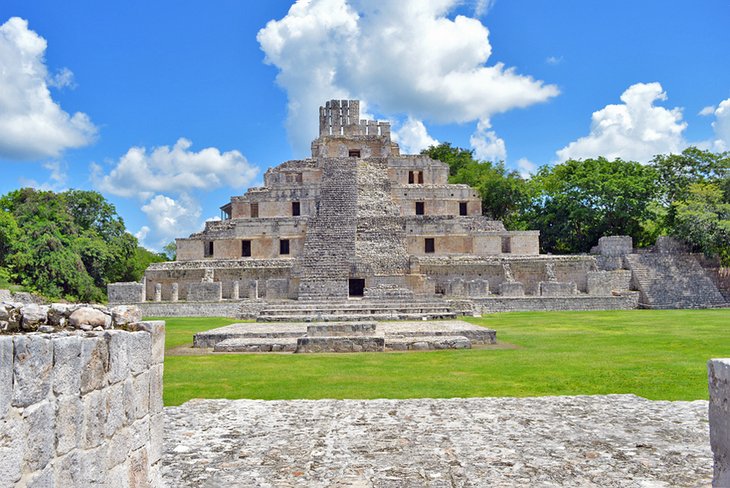
Edzna is a magnificent Mayan site that is much less visited than other monuments in the area and is situated in the northern portion of the state of Campeche.
It is distinguished by the Gran Acropolis, which is the major temple and is perched on a 130-foot elevation. Also, it features a ball court that is still amazingly well-preserved. The city may have been inhabited as early as 600 BC, but it was abandoned about the year 1500, according to historians. It is another another illustration of Puuc-style construction.
The Temple of the Masks, which wasn't discovered until 1988, is another significant building. In the foot of the structure are two masks, one of which represents the Dawn God and the other the Sunset God.
Over 25,000 people called the city home between AD 400 and 1000, when it was at its busiest.
11.Yaxchilan
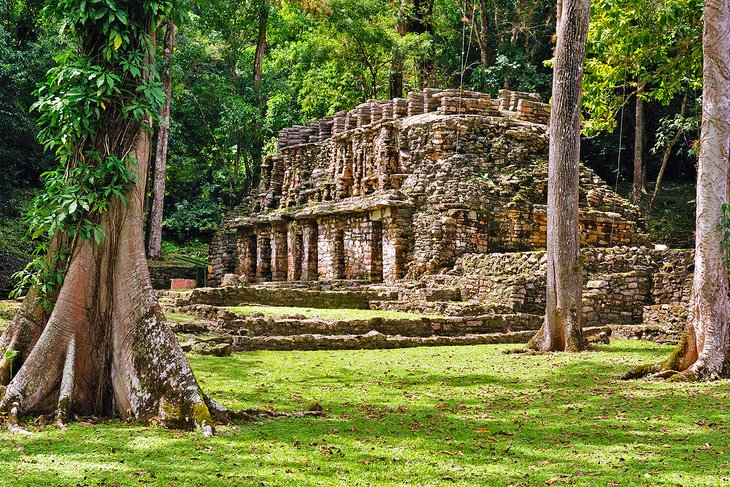
Traveling to Yaxchilan is like entering an Indiana Jones escapade. Travelers must take a colectivo or bus to Border Corozal, where they can board a boat to the ruins, in order to get to the site in Chiapas on the Usumacinta River. You can DIY, but to save the stress of haggling over boat pricing, the majority of guests choose a trip.
But those with a spirit of adventure are rewarded with a genuinely unforgettable experience. The jungle city was formerly a sizable community that frequently engaged in conflict with adjacent Palenque. The Great Plaza, Grand Acropolis, and Little Acropolis are three complexes that together contain more than 120 buildings.
Yaxchilan is known for its profusion of stelae, sculptures, and mural paintings. In fact, compared to other Mayan cities, it boasts some of the greatest carvings. When you travel to Yaxchilan, you are genuinely starting a journey that will stay with you for a very, very long time.
12.Kohunlich
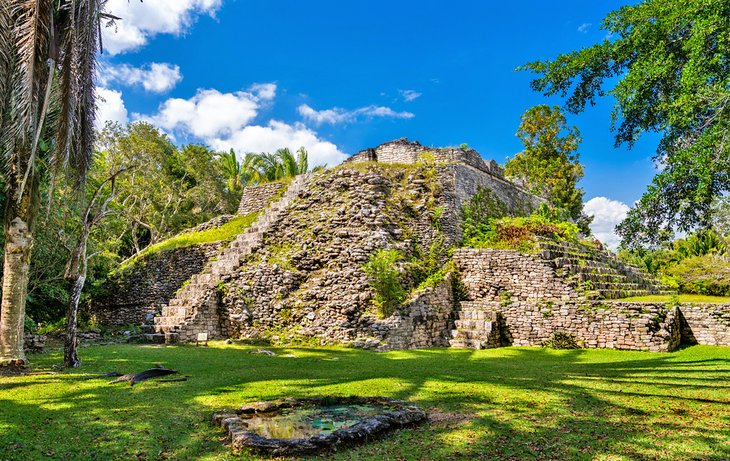
From the sparkling waters of Laguna Bacalar to the unspoiled Costa Maya, a journey to the very heart of the state of Quintana Roo rewards visitors with so much. Another hidden gem are the ruins of Kohunlich, which are tucked away in the bush.
The remains are surrounded by thick jungle, which is resonating with howler monkey screams, and are covered in moss and grass, appearing to blend into the surroundings. It's a fascinating bit of Mayan heritage, for sure.
The majority of the 21-acre site has not been excavated. It is thought to have been a stopover commerce city between capitals although it wasn't a significant capital. The Temple of the Masks, a building covered in enormous plaster masks, is the most remarkable feature here. There is also the structure known as 27 Steps, which is climbable and offers a stunning view of the jungle from its summit.

